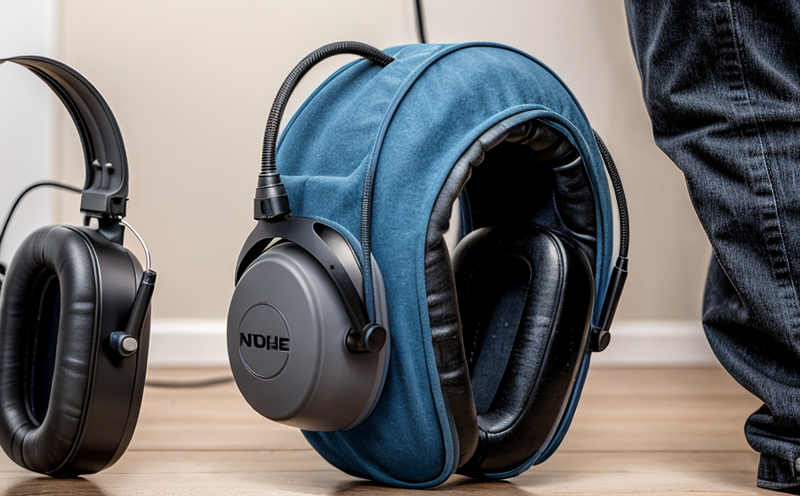EN 352-4 Active Noise Reduction Ear Muffs Testing
The European Standard EN 352-4 sets out the requirements for active noise reduction ear muffs, providing a framework to ensure that these devices meet the necessary performance criteria in terms of sound reduction. This standard is particularly relevant for industries where workers are exposed to high levels of noise, such as construction, manufacturing, and mining. The testing under this standard ensures that the ear protection provided by the ear muffs effectively reduces ambient noise to a safe level.
The primary focus of EN 352-4 is on active noise reduction technology, which involves electronics within the ear muff that actively cancel out external noise. This differs from passive noise reduction, where the material itself absorbs sound waves. The standard evaluates how well these active systems work by measuring their ability to block out specific frequencies and intensities of noise.
The testing process typically involves placing the ear muffs on a dummy head model that simulates human characteristics relevant for noise exposure. The device is then subjected to various noise environments, including steady-state sounds like engine noise or more complex sound patterns such as those found in industrial settings. The standard specifies that the reduction of noise should be measured at specific frequencies, with particular emphasis on those most harmful to hearing.
One key aspect of this testing is the evaluation of the active noise cancellation system's performance under different ambient conditions and for various types of noise sources. This ensures that the ear muffs can effectively provide protection in a wide range of environments. The standard also includes criteria for the electrical components within the ear muff, ensuring they are safe to use and function properly.
The results of the tests conducted under EN 352-4 are critical for compliance with occupational safety regulations across Europe. Compliance ensures that workers in noisy environments have access to effective protection against noise-induced hearing loss. The test outcomes help manufacturers verify that their products meet or exceed the specified performance levels, thereby maintaining a high standard of worker safety.
Understanding the importance of these tests is crucial for quality managers and compliance officers responsible for ensuring occupational safety in their organizations. For R&D engineers and procurement teams, this knowledge provides insights into the latest technologies and standards that can be incorporated into product development or sourcing decisions.
Applied Standards
| Standard | Description |
|---|---|
| EN 352-4 | This standard specifies the requirements for active noise reduction ear muffs, including performance criteria and testing methods. |
| ISO 1999:2007 | A general guide to personal hearing protection devices. |
Quality and Reliability Assurance
- Compliance with international standards ensures that products meet the necessary performance levels.
- Evaluation of active noise cancellation systems under various environmental conditions guarantees consistent product quality.
International Acceptance and Recognition
- The results of EN 352-4 tests are recognized by regulatory bodies across Europe, ensuring compliance.
- This standard is widely adopted in industries where noise control is critical for worker safety.





